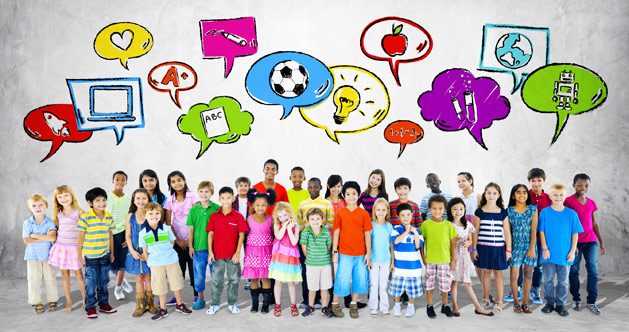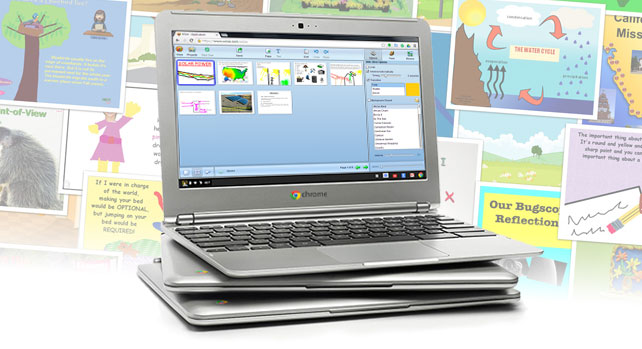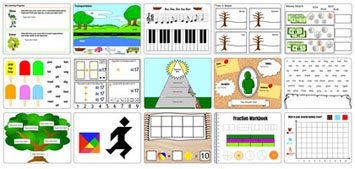
The case for an interdisciplinary approach

If we were going to build a house, we would expect that all its various parts would work together. We would assume that the architect shared the building plans with the plumbing, electrical, and general contractors. If these contractors did their part without regard to how their work fit in with what others were doing, the house would be inhabitable. But in a similar manner, school curricula are often disconnected; that is, we categorize subjects by disciplines and teach them separately. Why aren’t we concerned in schools when the content of one subject does not relate to other subjects?
Instead of studying motion across the subject areas: what is it, where we see it, and how it affects us in our daily lives, we study the principles of motion only in a science class. In most schools, the only connection between a topic like motion taught in science to other subjects is in the minds of students. This is often by chance rather than by design.
Most schools will say that they want students to have an understanding of their world as a whole, but they seldom look at topics with an interdisciplinary focus. Why? It is easy to find reasons why this disjointed approach to learning happens:
Despite the norm, there are many schools, that practice cross-curricular teaching. They organize students into interdisciplinary teams and coordinate lessons so that what happens in math, science, language arts, and social studies all tie to a common theme. Many times these teachers team-teach during larger blocks of time.
Advocates of this more holistic approach to curriculum argue that it helps students:
In recent years, curriculum developers have begun putting money and effort behind the notion of connecting allied disciplines. Linking the disciplines of science, technology, engineering, and math has been given the acronym STEM.
These disciplines have a lot in common, so their interconnection seems logical. We can find applications for each of these disciplines in the other. For example, we use science, technology, and math in the field of engineering. Similarly, we might use technology, engineering, and math in the study of a science such as genetics.
Some educators say that the arts are an integral part of STEM and they shouldn’t be excluded from an interdisciplinary mix, calling their approach STEAM. For example, if students are studying the transfer of energy, art could be a means to show it through music, dance, or poetry.
Still others feel that it is hard to exclude any discipline from a unified study. Everything, they say, is interconnected. One program at Spigot Science uses the large acronym STEAM GLASS + to characterize this all-inclusive approach. It incorporates more subjects than STEAM, such as geography, language arts, and social studies.
The one thing that all these acronym-labeled programs have in common is the recognition that the ways we divide subjects is artificial and is something that occurs mainly in schools for the convenience of the education system. The way schools work and the way scientists and others work is quite different. When scientists are studying a problem, there are often scientific, mathematical, artistic, or social elements involved. They seldom think about which discipline is at play when solving a problem.
This discipline separation in schools does not meld well with a problem or project-based approach. Nor does it help students learn to think deeply about solutions to problems that cross discipline lines.
| Subject Area | Separate subjects | Intradisciplinary by subject | Intradisciplinary by blended subjects |
| Science | Newton's First Law (An object at rest stays at rest and an object in motion stays in motion with the same speed and in the same direction unless acted upon by an unbalanced force). |
Newton's First Law | How do we know how much force is applied to cause objects to move? Force experiments and calculations |
| Math | Area of a trapezoid | Force equation: F = m x a force = (mass)(acceleration) |
|
| Social Studies |
The Civil War- Battle of Gettysburg | Who was Isaac Newton? | What was happening in the world when Newton developed his laws? Research and multimedia project |
| Language Arts |
Writing prompt: My favorite holiday | Writing prompt: Forces in our lives | |
| Art | Watercolor: Spring | The Art of Force: Newton Mobiles | How do forces affect us? Illustrate the effects with an art project. |
| Health | Avoiding disease | Forces that affect our bodies – the roller coaster |
The ultimate goal for the study of any subject is to develop a deeper understanding of its content and skills so that students can engage in higher-level thinking and higher- level application of its principles. When students dig deeper and understand content across several disciplines, they will be better equipped to engage in substantive discussion and application of the topic. They will also be better able to see relationships across disciplines.
Suppose upper elementary or middle school students were studying ecosystems. If they were studying this in science class, they might learn about how the habitats of plants or animals are interrelated. This is fine, but it doesn’t push the topic as far as it could go. Students could collect and analyze data about ecosystems in the math portion of the study. They might use technology to find and represent information. They could learn what ecological engineers do and try their hand at designing a balanced ecosystem. Students could represent their findings using multimedia applications. And this study could go on to touch all the other school subjects.
Engaging in a thorough study of ecosystems would involve reading, writing, planning, designing, interacting, producing, and more. When students learn though an interdisciplinary approach, they are acting as they will in the real world—solving a problem rather than studying a subject. They are using many methods to gather, analyze, and process data.
Of course, digging deeper doesn’t fit well in the time frame that most schools use. It takes time to link content across several disciplines, and it may be difficult to squeeze a learning activity into a 40-minute period. To change the method of learning will mean changing more than the curricula. The school structure, including the schedule and methodology will also need to change.
The measurement of interdisciplinary approaches does not fit well in a traditional testing format. Just as test developers have found it hard to create science tests that include hands-on experiences, they would find it very challenging to test understanding when the content crosses several disciplines. Indeed, to measure the results of an interdisciplinary, problem-based approach, we must often use rubrics and other measures that some test makers feel are “soft measurement” due to the difficulty of getting quantifiable data.
One ray of hope comes from the support offered by the Common Core State Standards initiative. This effort is embraced by 45 states and it supports digging deeper though cross-curricular teaching and its associated problem-based and project-based approaches. It supports using a variety of methods and incorporating technology to help all students learn. This initiative seeks to prepare students for college and their careers.
To prepare our students for an integrated world, we need to break out of the separate-discipline mentality and develop more holistic and problem/project-based approaches. Many have tried to do this, and it isn’t easy. Our separate-disciplinary structure is deeply ingrained in the culture of schools.

If we can ever reach the point where we view education as more than separate subjects and can begin to replicate the way problems are solved in teams in the working world, perhaps we will then be able to think outside the separate boxes that we our curriculum is squeezed into now. When we achieve this, our students will be the winners. After all, they are what this effort is all about.
Creative Educator can help you bring project-based learning to your school.
Learn More

Wixie
Share your ideas, imagination, and understanding through writing, art, voice, and video.

Rubric Maker
Create custom rubrics for your classroom.

Pics4Learning
A curated, copyright-friendly image library that is safe and free for education.

Wriddle
Write, record, and illustrate a sentence.

EDU ToDo
Interactive digital worksheets for grades K-8 to use in Brightspace or Canvas.
Topics